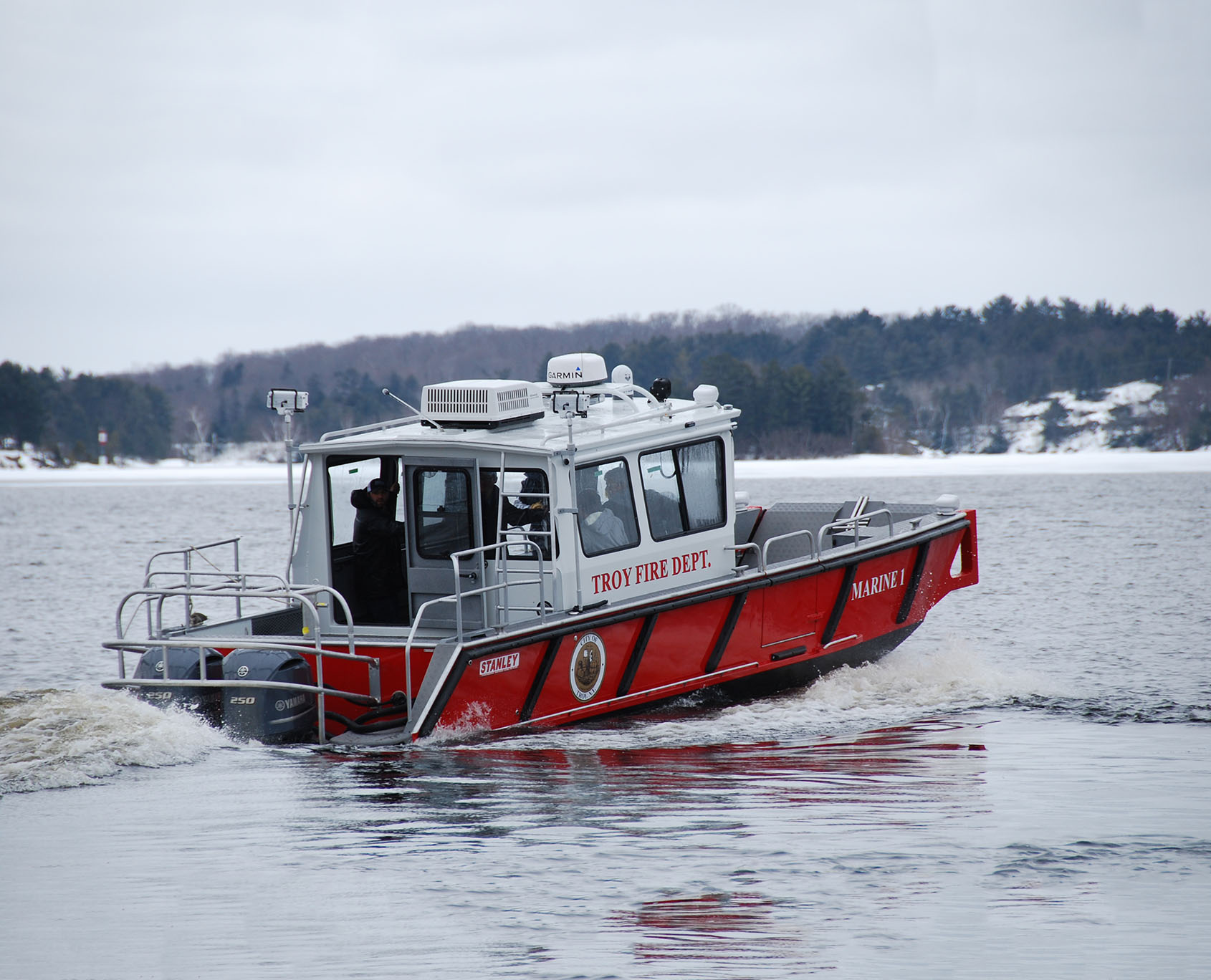The Troy (NY) Fire Department is responding to incidents on and along the upper Hudson River with its new Stanley 32-foot high-speed fire-rescue boat.

Eric McMahon, Troy Fire Department’s assistant chief, says that the department applied for and received a Port Security Grant that made the purchase of the fire-rescue boat possible. “We put out our specifications that stated we wanted a boat with a bow-mounted door,” McMahon says, and the department received a quote from Stanley, which won the contract.”
Troy wanted a dedicated gasoline engine to power the fire pump as well as a fully enclosed wheelhouse to protect the operator and crew from the elements.
The Stanley fire-rescue boat is 32 feet long with a 10-foot beam, a 10,640-pound displacement, and drawing 19½ inches unloaded and 21 inches loaded. The boat is powered by twin 250-horsepower Yamaha 250XCA outboard engines and carries a Darley PSDE 1,500-gpm pump powered by a KEM 6-liter marinized gasoline engine.
Douglas Coupar, sales representative for Connor Industries, which owns Stanley, says that Troy wanted a dedicated gasoline engine to power the fire pump as well as a fully enclosed wheelhouse to protect the operator and crew from the elements. He notes that the wheelhouse is climate-controlled by a Dometic Dura Sea rooftop air conditioning unit which has a 1,000-watt heating option installed for cold-weather operations.
McMahon points out that the fire-rescue boat can accommodate eight persons, and that its wheelhouse is protected by HEPA filters and is pressurized to keep smoke and toxins out. “As part of the specs, we had folding benches installed in the wheelhouse, so we have the ability to carry two critically injured patients on backboards inside,” he says. “And with the drop-down bow door, we are able to walk the injured patients off the boat and directly onto land.”
The drop-down bow door also allows the department to lay the door down and run 5-inch LDH off the fireboat and onto shore “to use the fireboat as an endless water supply if needed,” McMahon says. “In front of the wheelhouse, there’s a Christmas tree with a 5-inch discharge, four 2½-inch discharges with reducers, topped off by a Task Force Tips Typhoon monitor with a fog nozzle and stacked tips. One of the requirements of the Port Security Grant was that the boat have foam capabilities, so it was spec’d to hold a 300-gallon foam tote, and we have a 250-gpm foam eductor to proportion the foam.”
Troy’s fire-rescue boat also serves as a dive boat, McMahon notes, as the department had two dive platforms added to the back of the vessel. The Stanley-built boat also has a grounding keel that allows the boat to be eased up to shore to allow it to drop its bow gate.
As part of the specs, we had folding benches installed in the wheelhouse, so we have the ability to carry two critically injured patients on backboards inside
Coupar points out that the fire-rescue boat has two push knees, one on each side of the bow door, that are useful when an operator needs to hold the boat stable against an object. “They might be against a bridge abutment or some other type of object where they need to hold the boat,” he says. “The operator pushes against the abutment with the push knees, lowers the gate, and the boat stays rock-steady, even in a heavy current, because the operator is using engine power to push against the object.”
The Troy fire-rescue boat also has Pump-Boss 200 marine controls, a 6-kW Westbrook marine generator, two 12-inch Garmin touchscreen monitors, a Garmin VHF 110 marine radio, a Garmin GMR 18HD Radome radar, and a FLIR M324S night vision camera. Emergency lighting includes a Whelen LED Mini Liberty II light bar, four Whelen red surface mount LED lights, two Whelen LED pole lights, as well as a Whelen waterproof siren and speaker.
